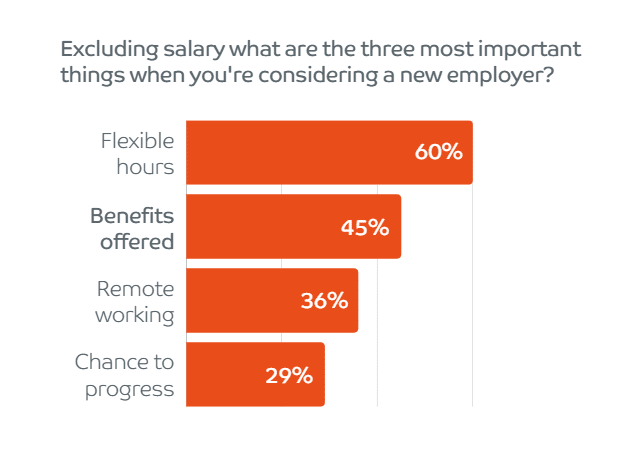A good wellbeing programme can help your employees gain speedy access to both mental and physical healthcare, making them feel valued and supported at work. The majority of small businesses already offer some form of wellbeing support, but SMEs can make their benefits package work harder for their people by investing smartly in areas that make the most impact.
Our Wellbeing for SMEs page includes lots of free resources for small businesses, but if you’re looking for a quick-start guide, these four steps can help you make sure you’re getting great value from your employee wellbeing plan.
Download this blog as a quick-reference fact sheet.
Download PDF
Understand the impact of wellbeing
Workplace wellbeing benefits can help reduce absences, improve morale and make your business more attractive to job hunters, yet they’re sometimes viewed as a ‘nice to have’.
In January 2023, we asked over 2,000 UK employees about the wellbeing support on offer in their organisation, providing fresh insight into why health and wellbeing is such an important aspect of the employee experience.
Key stats from our survey of employees in small and medium-sized businesses (50-250 employees) include:
- 72% of SME employees say they find their wellbeing support useful.
- 36% of workers in small businesses use their wellbeing perks every month.
- 67% of SMEs have an allocated wellbeing budget.
Our free tools and courses can help you use wellbeing to improve your company culture and demonstrate its impact on your organisation.
Use employee benefits to recruit and retain top talent
The average cost to recruit and train a new employee is around £6,400, so holding onto your best people can have a big financial impact. Workers who are fit and healthy — both physically and mentally — are not only more likely to stay in their roles longer but are also shown to be more productive.
Wellbeing can be a great way to make your company more attractive to potential new hires. Employees told us that the benefits on offer are a key factor when they’re job hunting. In fact, ‘benefits offered’ was the third most important factor for workers when choosing a job, behind only salary and flexitime.

To learn more about how wellbeing can be used to attract top talent to your small business, download our free report: The Big Opportunity for SMEs.
Give workers support they really value
Employee wellbeing doesn’t have to be complicated — as long as you invest in meaningful perks that deliver the support your people really need.
In 2022, UK SMEs lost around £11 billion to mental health absences, so this is one area where you can provide meaningful support, whatever your budget.
The most sought-after benefits, as voted by employees, are:
- Private health insurance
- Access to counselling
- Mental health days
- 24/7 GP service
- Health check ups
If you’re just getting started with wellbeing, try Mental Health First Aid, telephone counselling to provide employees with valuable wellbeing support with minimal admin for business leaders or HR teams.
Measure return on investment to target your approach
Small businesses are less likely to have a dedicated wellbeing manager, so it’s often handled by someone juggling multiple responsibilities on limited time and budget.
These three easy steps can help you make sure your wellbeing strategy is highly targeted and delivering great value for money:
- Ask your people what they need — you could use a survey or focus group. Gathering feedback is the quickest way to adapt your approach.
- Measure what’s working well and target your investment in key areas. If something isn’t working well, scale it back.
- Make sure everyone’s aware of the benefits and how to access them. This could be through emails, posters and internal events.
For more advice on tailoring your wellbeing activities, try our blog on using feedback to shape your wellbeing strategy.
